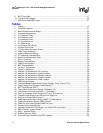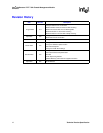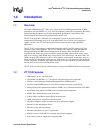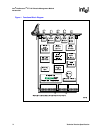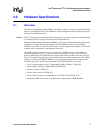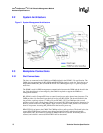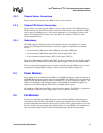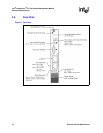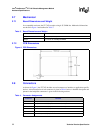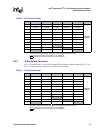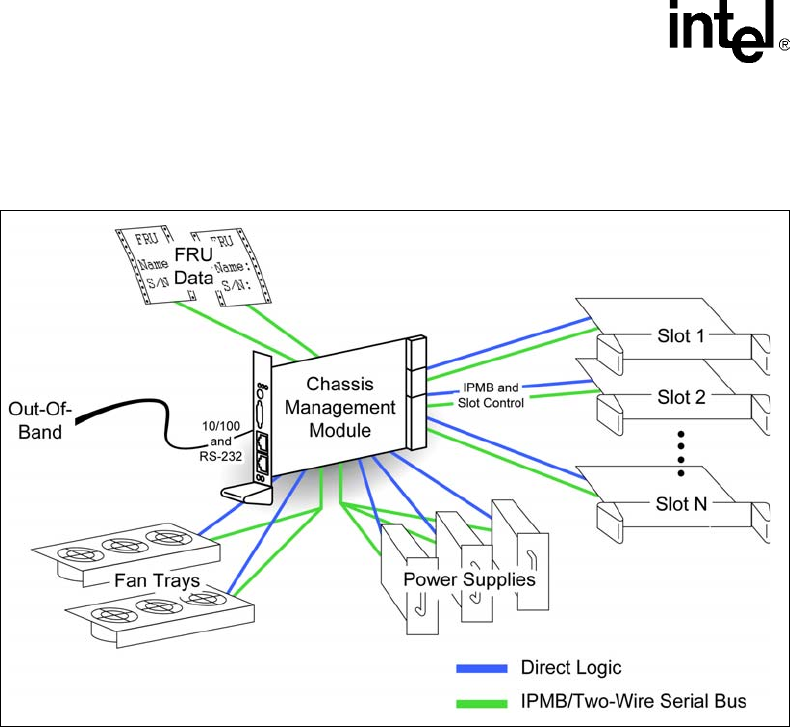
Intel
®
NetStructure
TM
ZT 7102 Chassis Management Module
Hardware Specifications
18 Technical Product Specification
2.2 System Architecture
2.3 Backplane Connections
2.3.1 Slot Connections
The slots are connected to the CMM via an IPMB defined in the PICMG* 2.9 specification. The
CMM also has connections for BD_SEL# and HEALTHY# signals to each slot. Each slot has an
independent IPMB, BD_SEL#, and HEALTHY#. The CMM supports up to 21 general-purpose
node slots.
The IPMB is used for IPMI management communication between the CMM and the board in the
slot. Each board that is to be managed by the CMM is required to support the IPMB as a
management channel.
BD_SEL# is used in CompactPCI slots to control board power and to detect board presence. The
CMM provides a bi-directional open drain driver for each BD_SEL#. The board installed in the
slot provides a pull-up resistor (1.2 KΩ ± 5% per PICMG* 2.0). The CMM provides a weak
pulldown resistor (and a diode clamp). When not asserted, BD_SEL# can be read to determine if a
board is present in the slot. If BD_SEL# is high, a board is present. If BD_SEL# is not asserted a
board is not present. Asserting BD_SEL# allows the board to power up.
HEALTHY# is an input to the CMM. The CMM provides a pull-up resistor. The board in the slot
asserts HEALTHY# based on board power being good and optionally other board-specific
requirements. BD_SEL# must be asserted for HEALTHY# to be asserted. When BD_SEL# is
asserted, and a board is removed, HEALTHY# will be deasserted.
Figure 2. System Management Architecture



